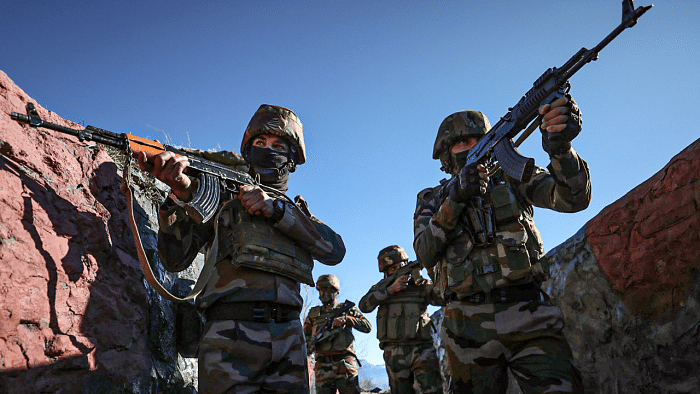
Indigenous Hizb-ul-Mujahideen outfit, which dominated the militancy landscape in Kashmir for three decades, has now been relegated to number three as Pakistan-based Lashker-e-Toiba and Jaish-e-Mohammad have taken centre stage in the Valley now.
Out of 168 active militants in Kashmir at the beginning of this year, 82 belonged to the LeT, followed by 41 with the Jaish, 38 with Hizbul, four with The Resistance Front (TRF), and three belonging to the Al-Badr outfit, sources told DH.
Founded in early 1990, the Hizbul quickly came under the control of Jamaat-e-Islami Jammu and Kashmir and played an important role to evolve the narrative of the Kashmir conflict from nationalism to jihad. The Hizbul was supported, since its inception, by the Pakistan spy agency Inter-Services Intelligence (ISI) to counter the Jammu and Kashmir Liberation Front (JKLF), a nationalist and nominally secular group that seeks independence of Kashmir from both India and Pakistan.
In 2020, reports started emerging that the Hizbul cadres in Pakistan were not being provided adequate training, weapons and ammunition, thus allowing major fallout between its chief Syed Salahuddin and the ISI.
Unconfirmed reports had emerged in the same year that Hizbul chief was attacked in Pakistan-occupied-Kashmir at the behest of the ISI. “After a 1991 merger with Tehreek-e-Jihad-e-Islami (TJI), which was backed by Jamaat, the Hizbul gained significant military might and its strength had reached about 10000 fighters,” a senior police officer said.
By the mid-1990s, the Hizbul was the sole militant group operating in the valley, he said. However, afterwards, the ISI started sending Pakistan and Afghan militants to Kashmir to keep control over the insurgency. But despite that, the Hizbul was regarded as one of the most influential outfits involved in the Kashmir conflict.
“When new-age militancy surfaced with Burhan Wani as an icon, Hizbul again came to limelight. However, after the killing of Burhan in 2016, as most of its commanders, including Riyaz Naikoo were eliminated by security forces, the Hizbul started to lose steam. It also fell from the ISI’s favour,” he revealed.
“The Hizbul leadership in PoK believe that ISI may have planned to attack Salahuddin in a bid to send a strong signal to other outfit cadres to toe their line,” the officer added.
Check out DH's latest videos: